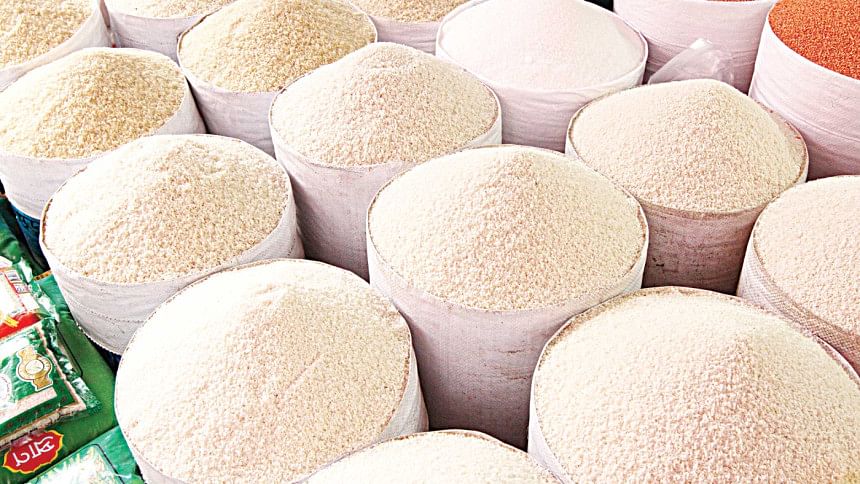Food, energy price shocks could last for years: WB

The war in Ukraine has dealt a major shock to commodity markets, altering global patterns of trade, production, and consumption in ways that will keep prices at historically high levels through the end of 2024, according to the World Bank's latest Commodity Markets Outlook report.
The increase in energy prices over the past two years has been the largest since the 1973 oil crisis.
Price increases for food commodities -- of which Russia and Ukraine are large producers -- and fertilisers, which rely on natural gas as a production input, have been the largest since 2008, said the World Bank in a statement after the release of the outlook on April 26.
The report comes at a time when Bangladesh, being an import dependent country for a number of key commodities, including petroleum, gas, wheat, edible oil, and fertiliser, faces increased import costs, with inflation hitting a 17-month high at 6.22 per cent in March.
For example, retail prices of highly import-based soybean oil in loose form shot up 15 per cent to Tk 170-Tk 172 per litre in Dhaka from a month ago.
And palm oil followed suit. Bottled soybean oil was selling 20 per cent higher at Tk 160-Tk 170 each litre yesterday compared to the same time a year ago, according to prices data compiled by the Trading Corporation of Bangladesh.
Wheat flour prices were 18 per cent higher year-on-year to Tk 35-Tk 38 each kilogramme.
"Overall, this amounts to the largest commodity shock we've experienced since the 1970s. As was the case then, the shock is being aggravated by a surge in restrictions in the trade of food, fuel and fertilisers," said Indermit Gill, the World Bank's vice president for equitable growth, finance, and institutions.
"These developments have started to raise the spectre of stagflation. Policymakers should take every opportunity to increase economic growth at home and avoid actions that will bring harm to the global economy," he added.

Energy prices are expected to rise more than 50 per cent in 2022 before easing in 2023 and 2024, the agency said in its report.
Non-energy prices, including agriculture and metals, are projected to increase by almost 20 per cent in 2022 and will also moderate in the following years.
Nevertheless, commodity prices are expected to remain well above the most recent five-year average. "In the event of a prolonged war, or additional sanctions on Russia, prices could be even higher and more volatile than currently projected," it added.
Because of war-related trade and production disruptions, the price of Brent crude oil is expected to average $100 a barrel in 2022, its highest level since 2013 and an increase of more than 40 per cent compared to 2021.
Prices are expected to moderate to $92 in 2023 -- well above the five-year average of $60 a barrel, according to the outlook.
Natural-gas prices (European) are expected to be twice as high in 2022 as they were in 2021, while coal prices are expected to be 80 per cent higher, with both prices at all-time highs.
"Commodity markets are experiencing one of the largest supply shocks in decades because of the war in Ukraine," said Ayhan Kose, director of the World Bank's Prospects Group, which produces the Outlook report.
"The resulting increase in food and energy prices is taking a significant human and economic toll -- and it will likely stall progress in reducing poverty. Higher commodity prices exacerbate already elevated inflationary pressures around the world."
Wheat prices are forecast to increase more than 40 per cent, reaching an all-time high in nominal terms this year, it said adding, "That will put pressure on developing economies that rely on wheat imports, especially from Russia and Ukraine."
Metal prices are projected to increase by 16 per cent in 2022 before easing in 2023 but will remain at elevated levels.
"Commodity markets are under tremendous pressure, with some commodity prices reaching all-time highs in nominal terms," said John Baffes, senior economist in the World Bank's Prospects Group.
"This will have lasting knock-on effects. The sharp rise in input prices, such as energy and fertilisers, could lead to a reduction in food production particularly in developing economies. Lower input use will weigh on food production and quality, affecting food availability, rural incomes, and the livelihoods of the poor."

 For all latest news, follow The Daily Star's Google News channel.
For all latest news, follow The Daily Star's Google News channel. 



Comments